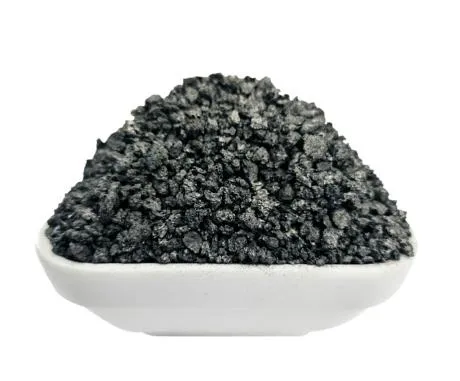jul . 28, 2025 16:59 Terug naar lijst
Industrial Efficiency Enhanced with High-Performance Recarburizer Solutions
In the evolving landscape of modern metallurgy, the demand for quality carbon additives has intensified. Foundries, steel mills, and casting operations all rely heavily on recarburizing agents to improve product consistency, carbon content, and overall operational efficiency. Among these, recarburizer solutions stand at the forefront of innovation, offering dependable carbon restoration and superior compatibility with industrial processes. As manufacturers strive for tighter tolerance controls and better surface finishes in cast iron and steel products, choosing the right recarburizer becomes not just a preference, but a necessity.

Meeting Metallurgical Demands with Cheap Recarburizer Artificial Graphite Efficiency
In high-volume production environments, cost control is paramount. That's why many manufacturers are turning to cheap recarburizer artificial graphite, which delivers excellent value without sacrificing performance. While the term "cheap" may suggest lower quality, in this context it often reflects optimized sourcing, efficient processing, and consistent availability. The effectiveness of artificial graphite as a recarburizer lies in its high fixed carbon content, low ash and sulfur levels, and rapid dissolution in molten iron. Foundries seeking a reliable carbon recovery rate will find artificial graphite particularly suitable, especially when balancing cost with quality is essential to their production goals.
Optimizing Iron Casting Outcomes Through Coal Recarburizer Integration
For industrial operations focused on grey iron or ductile iron casting, coal recarburizer plays a crucial role in adjusting carbon content post-deoxidation. Often derived from anthracite or other high-carbon coal types, this material is valued for its cost-effectiveness and availability. The real benefit of coal-based recarburizers lies in their flexibility during furnace charging and their compatibility with other charge materials. Although the carbon content of coal recarburizers is generally lower than graphite alternatives, their widespread use in basic iron casting operations demonstrates their enduring utility and economic benefit in large-scale foundry practices.
Consistent Casting Results Backed by Graphite Recarburizer Performance
Achieving uniformity in carbon levels is critical for metallurgical consistency, and graphite recarburizer delivers on that requirement with precision. Thanks to its refined structure and high-purity composition, graphite recarburizer provides excellent thermal conductivity and facilitates quick assimilation in molten metals. For industries working with cast steel and high-grade iron alloys, the low nitrogen and hydrogen content in graphite materials ensures reduced gas porosity in the final product. This level of quality is crucial in components destined for demanding industrial applications such as automotive, machinery, and energy production sectors, where strength and structural integrity are paramount.
Reinforcing Production Processes Through Strategic Recarburizer Applications
The broad category of recarburizer includes various carbonaceous materials, each tailored to specific smelting conditions and end-use requirements. Whether in electric arc furnaces, induction furnaces, or cupola furnaces, recarburizers help refine the metallurgical structure by replenishing lost carbon during melting. Factors such as particle size, porosity, absorption rate, and chemical purity influence the choice of recarburizer for a given application. Manufacturers who invest in tailored recarburizer products often experience better furnace performance, shorter melting times, and reduced slag formation—outcomes that translate directly to improved yield and minimized energy consumption.
Industrial Carbon Control Strengthened by Recarburizer Carbon Purity
Precise carbon control is essential in the production of specialty steels and precision castings, making recarburizer carbon purity a decisive factor in material selection. High-purity recarburizers not only ensure optimal metallurgical properties but also reduce impurities like sulfur and moisture that could otherwise compromise casting quality. In sectors such as aerospace, nuclear energy, and advanced manufacturing, the purity of carbon additives directly influences the final mechanical properties of the product. Using high-grade recarburizer carbon helps manufacturers meet stringent industrial standards, minimize inclusions, and produce components capable of withstanding extreme operational conditions.
Factors to Consider When Selecting Industrial Recarburizer Products
When choosing a recarburizer for industrial applications, manufacturers must assess several technical parameters. These include the fixed carbon percentage, ash and sulfur content, size distribution, and dissolution rate in molten metal. Industrial operations benefit most from products that strike a balance between high efficiency and affordability.
Application Variability Across Recarburizer Material Types
Artificial graphite, coal-based carbon, and petroleum coke-based recarburizers each serve distinct purposes across metallurgy. While artificial graphite is ideal for high-purity requirements, coal-based variants offer advantages in bulk volume applications. Matching the right recarburizer type with process conditions maximizes efficiency and product quality.
Environmental Implications of Recarburizer Use in Modern Foundries
Sustainable production is increasingly important. Many foundries are shifting toward low-emission recarburizer options that offer both industrial performance and reduced environmental impact. High-carbon products with low volatile content contribute to cleaner furnace operation and help meet environmental compliance regulations.
Recarburizer Products FAQs
Q: What is the main function of recarburizer in iron and steel manufacturing?
A: Recarburizers are used to restore or adjust carbon levels in molten metal, ensuring the final product meets desired mechanical and chemical properties.
Q: How does cheap recarburizer artificial graphite compare with other types in terms of efficiency?
A: While it’s more economical, artificial graphite offers high carbon content and quick absorption, making it highly efficient, especially in steel and high-grade iron production.
Q: Can coal recarburizer be used in high-performance castings?
A: Yes, but it is typically used in less demanding applications. For precision castings or components requiring high purity, graphite-based recarburizers are preferred.
Q: What industries benefit most from graphite recarburizer usage?
A: Automotive, energy, heavy machinery, and aerospace sectors benefit due to the purity and consistency graphite recarburizers bring to metallurgical processes.
Q: How can I determine the right recarburizer carbon specification for my furnace?
A: It's important to evaluate furnace type, base metal composition, and production goals. Consulting technical data sheets and performing trial charges can help identify the ideal grade.
-
Strength with Premium Steel and Calcined Bauxite
NieuwsJul.28,2025
-
Revolutionize Construction Efficiency with Smart Industrial Materials
NieuwsJul.28,2025
-
Redefined with High-Grade Iron Powder Solutions
NieuwsJul.28,2025
-
Metallurgical Efficiency with Innovative Recarburisers and Covering Agents
NieuwsJul.28,2025
-
Industrial Efficiency Enhanced with High-Performance Recarburizer Solutions
NieuwsJul.28,2025
-
Boosted by Advanced Iron Powder and Carbon Additive Solutions
NieuwsJul.28,2025
